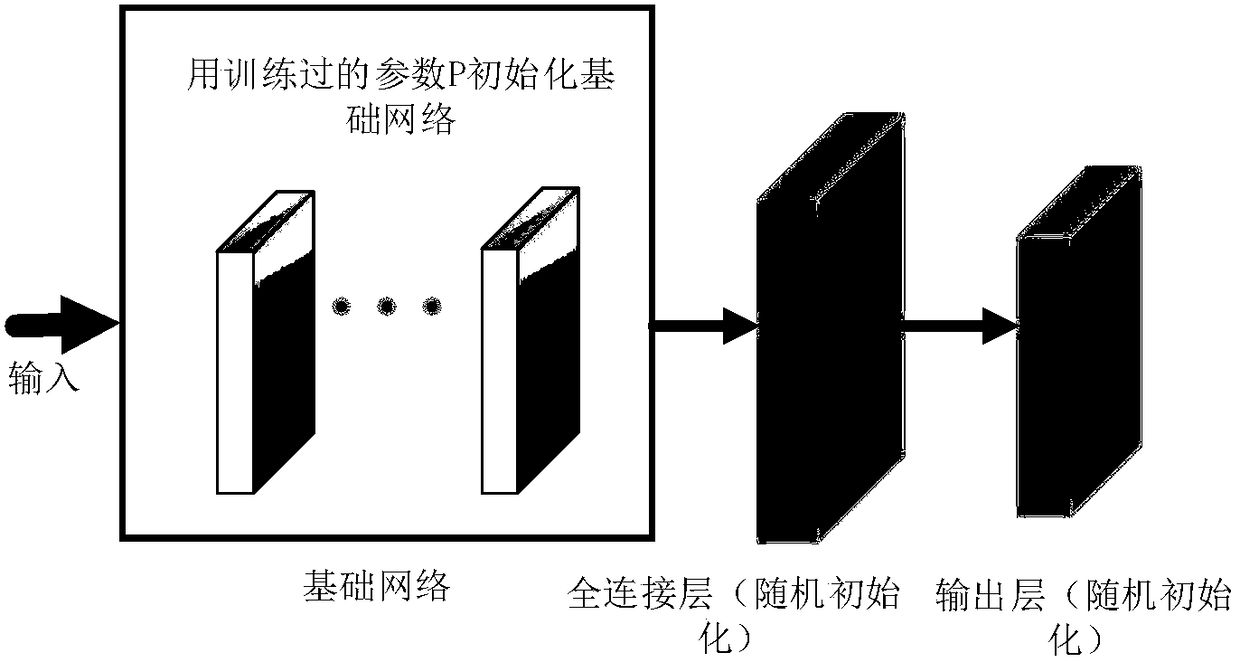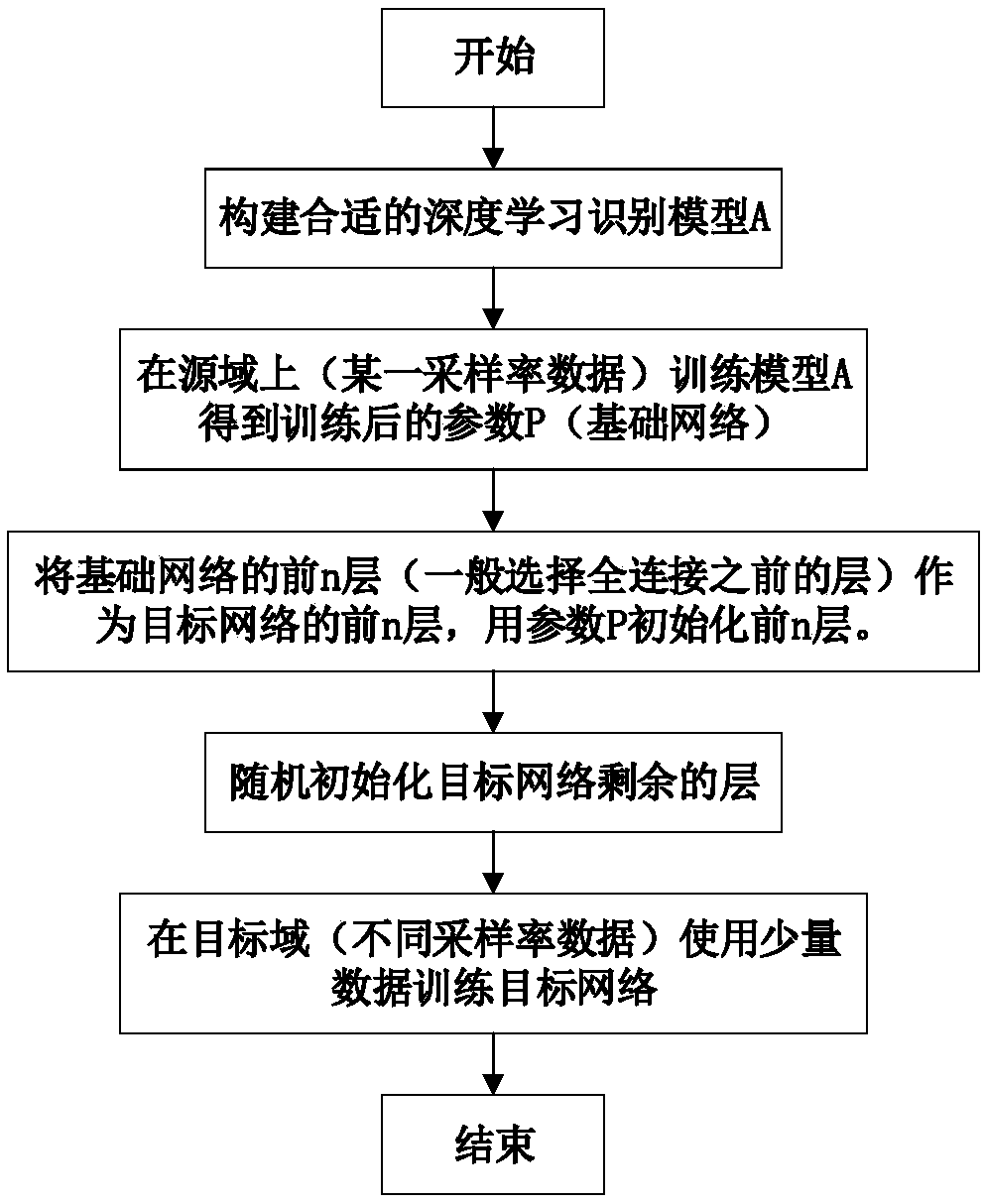Passive radar external radiation source signal identification method based on transfer learning
A passive radar and external radiation source technology, applied to radio wave measurement systems, instruments, etc., can solve problems such as insufficient results and insufficient flexibility of the model, and achieve the effect of saving training time
- Summary
- Abstract
- Description
- Claims
- Application Information
AI Technical Summary
Problems solved by technology
Method used
Image
Examples
Embodiment Construction
[0024] The present invention aims to design a migration learning method for external radiation source signal recognition, which can solve the migration problem of models obtained by training signals with different sampling rates. This method is based on model-based parameter migration, which migrates the model and parameters trained on a sampling frequency dataset (source domain) to another sampling frequency dataset (target domain), requiring only a small amount of labeled target domain data. , after a short period of training, the recognition model of the target domain can be obtained. This method is independent of the size relationship between the sampling frequency of the source domain and the target domain.
[0025] (1) Model structure
[0026] The realization model of the present invention is as figure 1 shown.
[0027] Firstly, a model is trained on a sampling frequency dataset as the basic network, and then the model and parameters of the basic network are directly...
PUM
 Login to View More
Login to View More Abstract
Description
Claims
Application Information
 Login to View More
Login to View More - R&D
- Intellectual Property
- Life Sciences
- Materials
- Tech Scout
- Unparalleled Data Quality
- Higher Quality Content
- 60% Fewer Hallucinations
Browse by: Latest US Patents, China's latest patents, Technical Efficacy Thesaurus, Application Domain, Technology Topic, Popular Technical Reports.
© 2025 PatSnap. All rights reserved.Legal|Privacy policy|Modern Slavery Act Transparency Statement|Sitemap|About US| Contact US: help@patsnap.com



